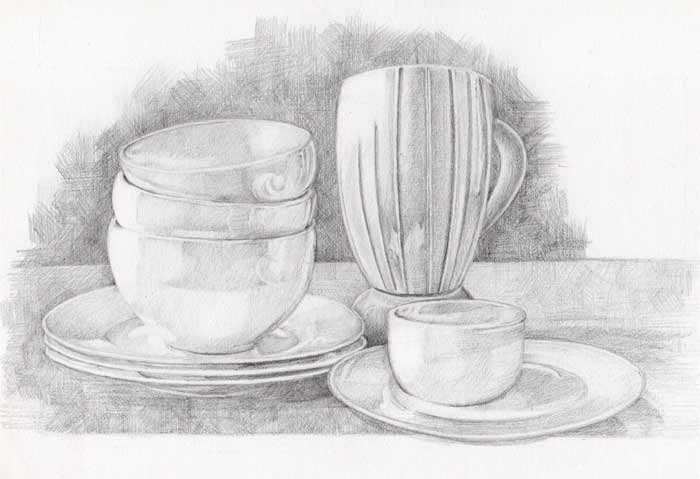Story and drawing from Mary Townsend, a Drawing Academy art competition winner
I started this Drawing Course with Drawing Academy six weeks ago and was immediately knocked out of my comfort zone.
I wasn’t expecting everything to be so new to me. From the way I hold my pencil to constructive drawing techniques – it’s all new.
I also have a lot of old habits to break, like copying from photographs and blending.
Even though I can see from the Drawing Academy educational videos that it is possible to get beautifully realistic results using constructive drawing I did wonder how long it would take me to get similar results.
As for blending graphite, I now realise that, in my case, I was using it to cover a multitude of ‘sins’. To the untrained eye, it made my drawings look better than they are and therefore is holding me back from my goal and reason for being here – to master the art of drawing.
I’m thoroughly enjoying working through this course and see every assignment as a milestone towards my goal.
Dear Mary,
Thank you very much for your drawing, I really like it, great job!
It’s good that you have new challenges. If Drawing Academy assignments would be too easy for you, the educational value of such a course would be very shallow. The fact that you have so much to learn simply shows that you are on the right path and should you walk it all the way, your drawing skills will improve.
Here’s what you need to consider:
1. Making copies, or drawing from photos, has very little educational value unless you copy the old masters to get good taste in art. I’m sure your goal is to become an original artist, therefore making original artworks is essential.
2. Yes, you are correct, constructive drawing is the foundation of making realistic and believable artworks from life, memory and imagination. It includes many features like rules of linear and aerial perspective, proportions, foreshortening, and so on. With time, a professional artist doesn’t think about those principles of constructive drawing, they are used on autopilot. However, to achieve such a level of drawing skills, you have to learn and use those principles of drawing.
3. One of the principles of constructive drawing says that it is better to draw all the objects as if they are transparent. This would help to avoid mistakes. It is hard to tell whether you used this principle as all constructive lines in your drawing are either erased or rendered over. Professional artists are not afraid of such helping lines and often leave them in place. This makes the artwork even more interesting and believable.
Should you draw the top oval of the jar as if it is transparent (in its entirety, not just the front half), you would notice that its corners are sharp and the oval is quite full despite it is located quite close to the horizon line. Also, the axis of this oval, should you draw them first, would help you to make sure it is symmetrical. The same applies to other ovals as well.
Once again, thank you for your drawing and positive feedback about the Drawing Academy course.
I wish you all the creative success you deserve.
Best regards,
Vladimir LondonArt tutor






Thank you so much for your very helpful advice and encouragement. I did rub out the lines before shading. Both drawing the lines from life and measuring with my pencil are new and challenging for me but I know I will get better with help and plenty of practice.